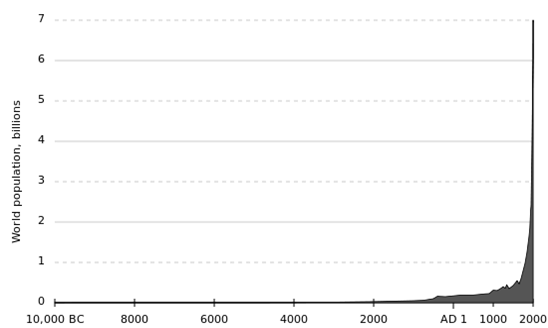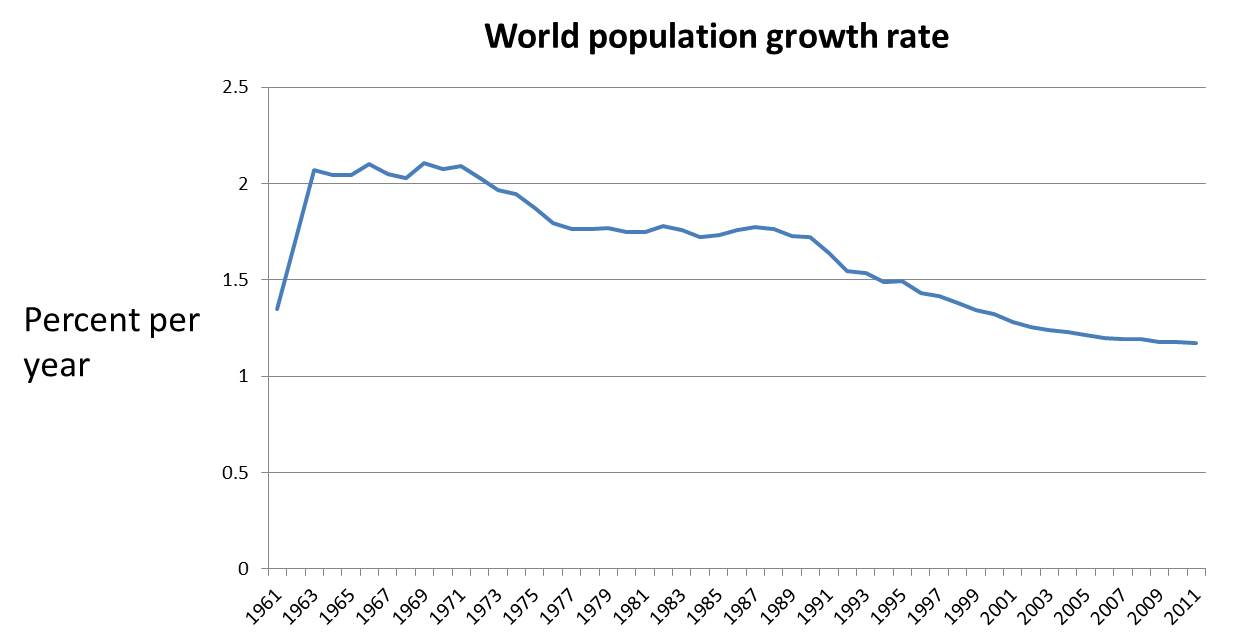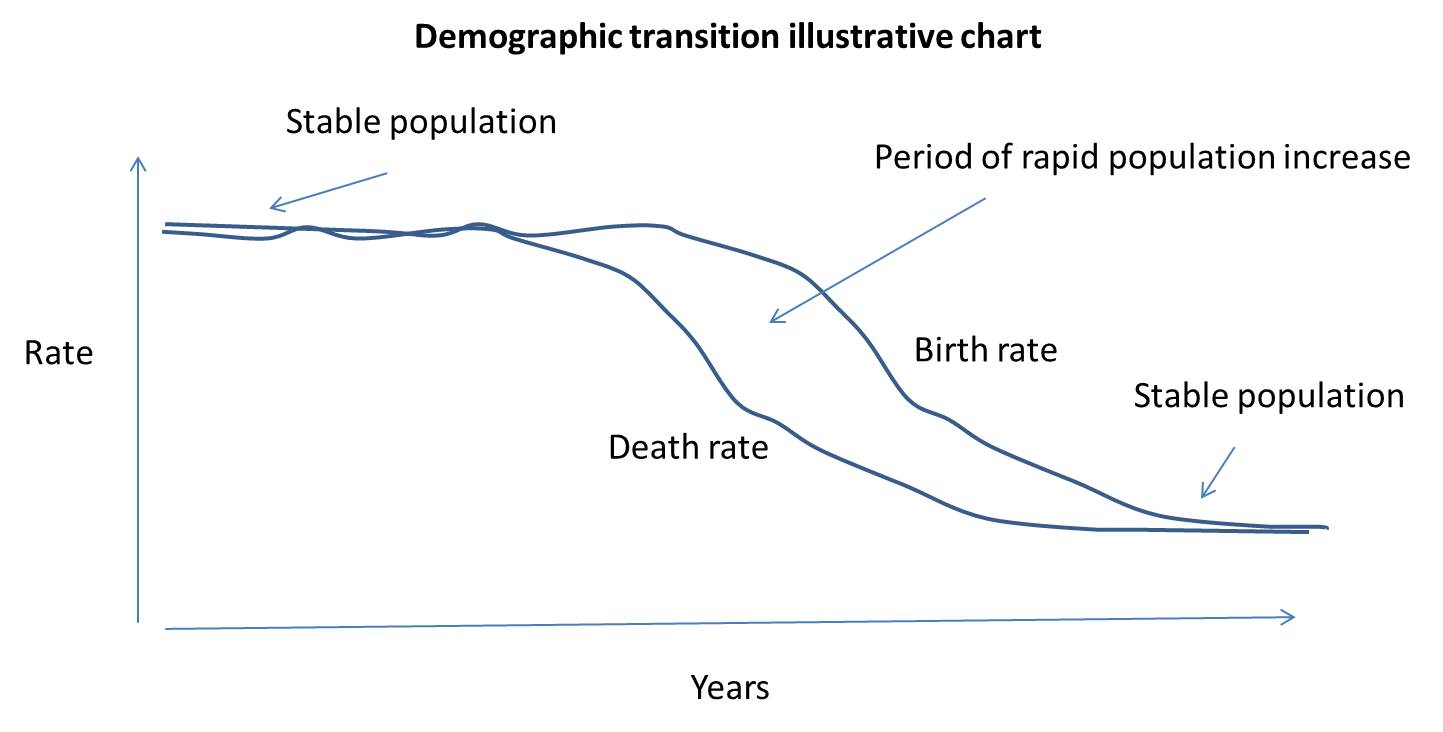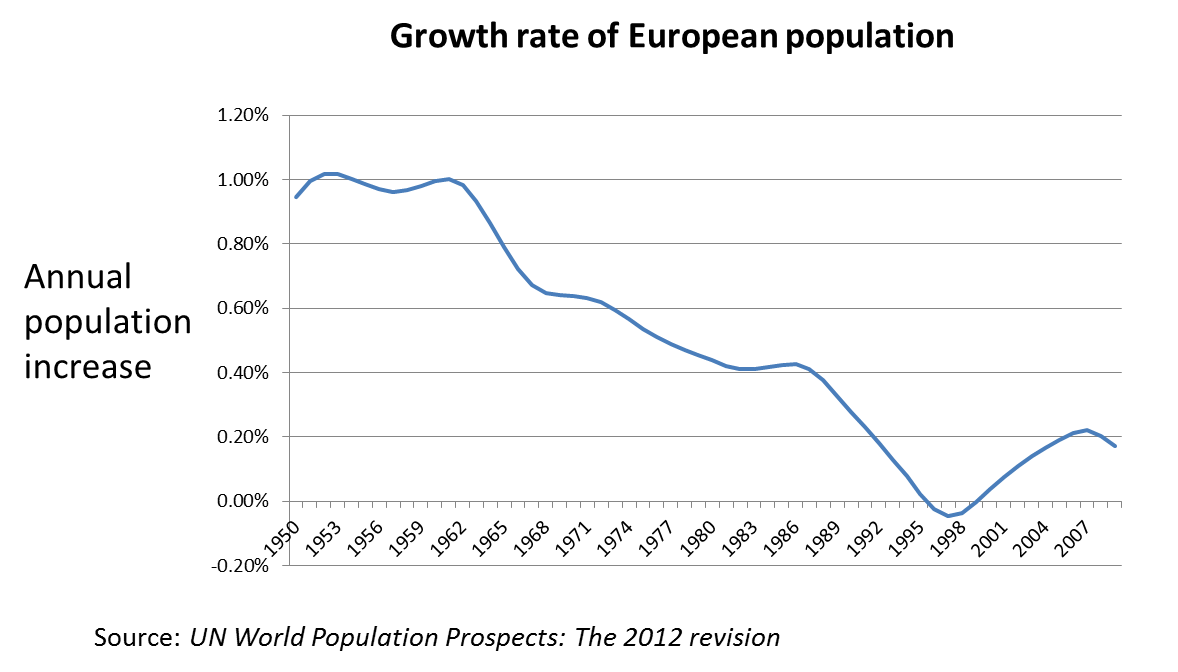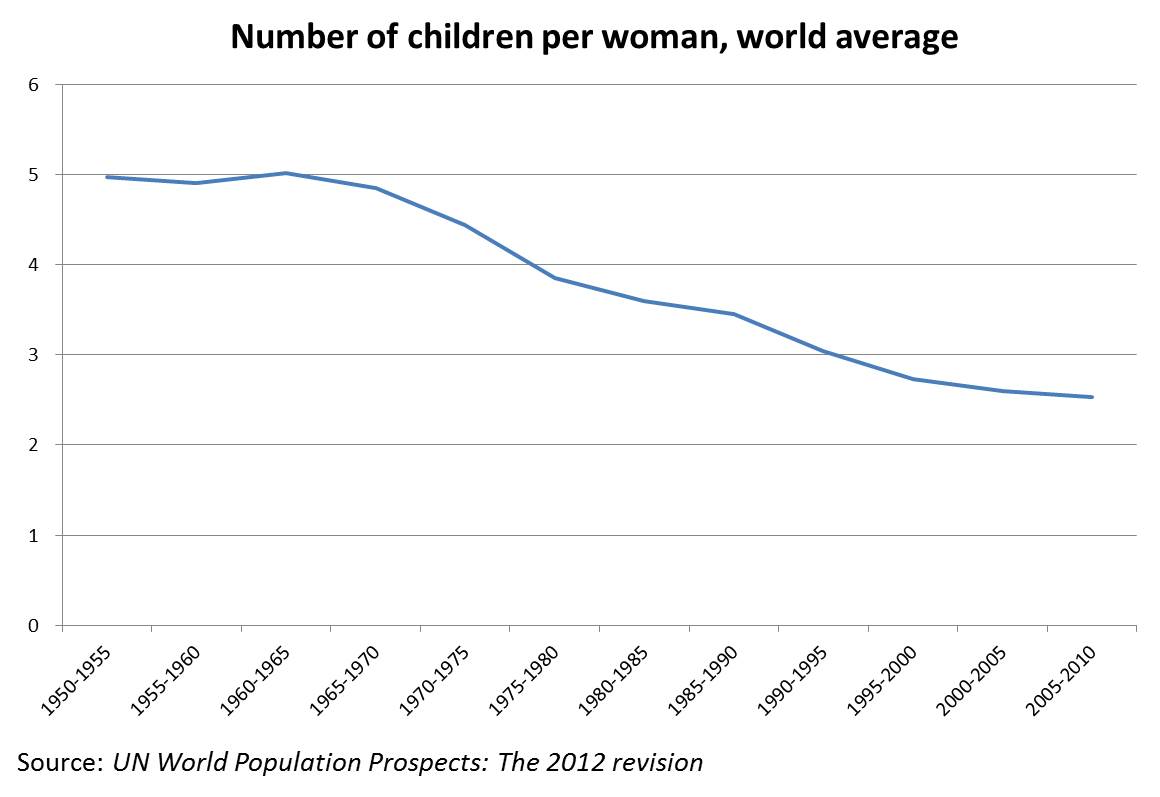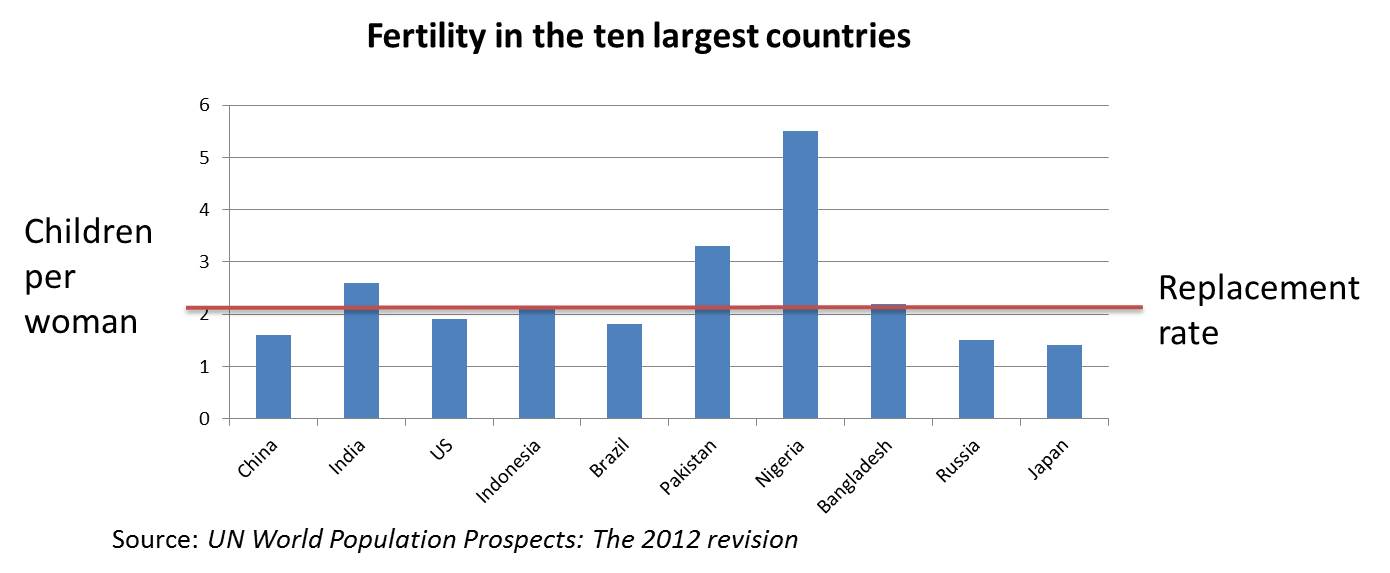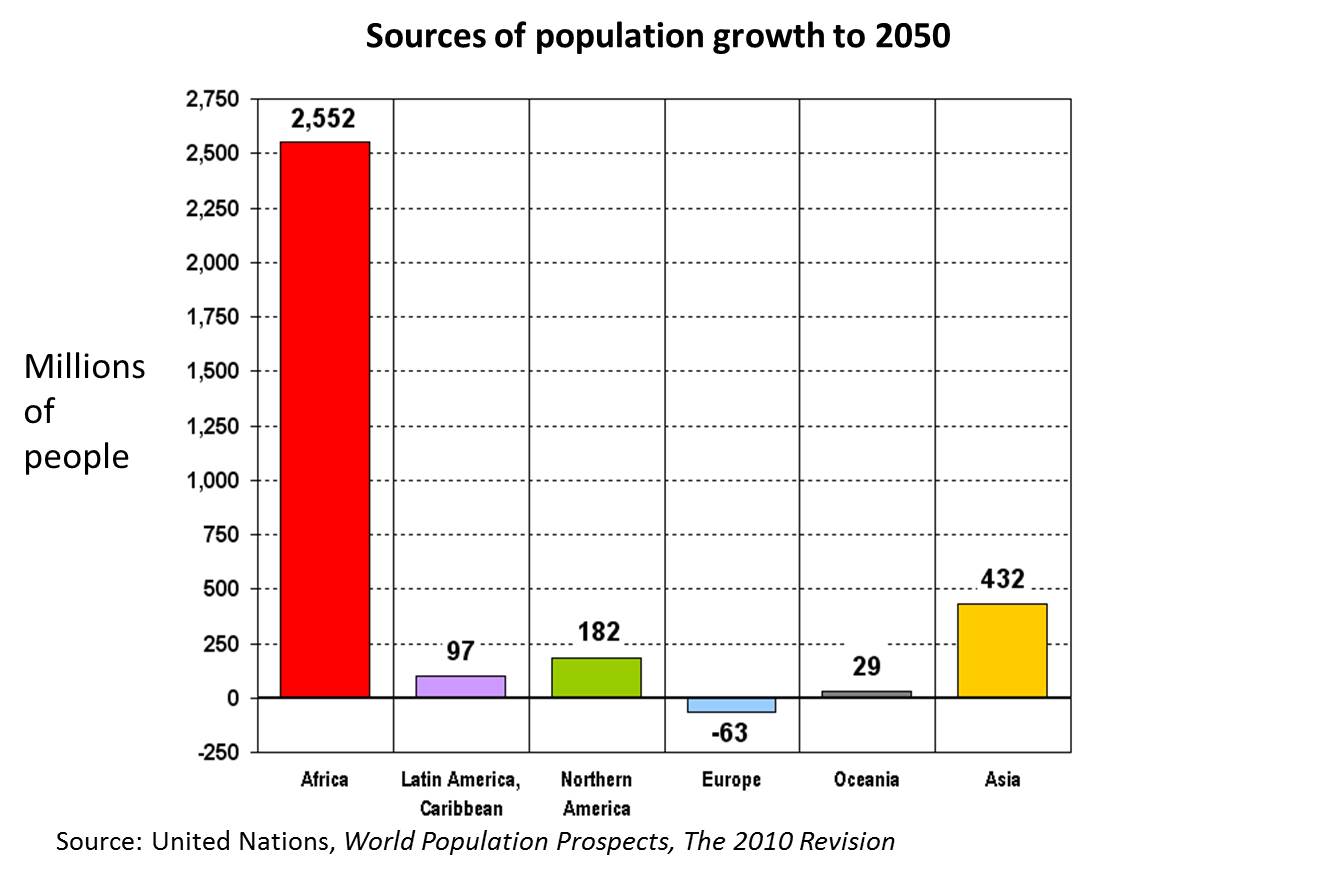Stephen Emmott's central mistake - human population growth isn't out of control
The first chart in Stephen Emmott’s ‘10 billion’ shows the world’s population for the last twelve thousand years. The growth is concentrated in the last couple of centuries. The choice of axes means that the human eye sees the recent increase as rapid, and increasingly so. We are supposed to panic.
Stephen Emmott's chart of world population
(Source: this graph appears to originate on Wikipedia, where it is called population_curve.svg.)
This is an extremely misleading chart. In fact, human population growth has slowed markedly and consistently since the late 1960’s. The rate peaked in about 1968 at around 2.1% but is now approximately 1.16% per year. (The lower levels at the start of the period the effect of starvation induced by Mao’s Great Leap Forward). In all but one year in the last twenty five the growth rate of population has fallen.
Source: UN World Population Prospects: The 2012 revision
Long run projections from the UN Population division suggest that the world population will continue to grow increasingly slowly until it peaks at some point just after the turn of the next century. By that time the globe will be home to about 10.5 billion people, or about 50% more than at present.
Of course, forecasts are only forecasts. Why should we have any confidence that the UN’s numbers are even roughly correct? Because many individual countries have gone through what is known as 'the demographic transition' in the last one hundred or so years. Before the transition, death and birth rates are high and roughly equal, meaning population is stable. Then economic development begins and death rates fall. Population grows. Some time later, birth rates also fall, and after a period population growth falls, often quite rapidly.
European countries all went through their demographic transition at some stage in the last 150 years. The growth rate of European population fell from about 1% per year in 1950 to below 0.1% today. Many Asian and American countries have also stopped growing rapidly.
Another way of looking at the likely increase in future population is to track the number of children borne to the average woman. If each women has a large number of children, then population is likely to grow rapidly. Those countries in which the fertility rate falls below about 2.1 children per woman will eventually experience falling population. The number of children isn’t sufficient to replace the existing number of inhabitants.
Many people, including Professor Emmott, seem not to release how steeply and consistently the number of children per woman has fallen in most countries of the world since the 1960s. The current rate – about 2.5 – is high enough to cause population to continue to rise for several generations to come. But the rate of fall in global fertility is sufficiently fast to make it likely that the rate will decline to below 2.1 children per woman within the next twenty or thirty years.
Strikingly, almost 50% of the world’s population lives in countries in which women have less than 2.1 children. This statistic needs to be remembered when we think about population: half the globe is going to see falling population relatively soon. The table below lists the current fertility rate for the biggest countries in the world
In seven out of the ten most populous countries, the fertility rate is already at or below the replacement level. (This doesn’t mean population is declining yet but – absent inward migration – it does mean that the growth rate will fall below zero within a generation or so).
The countries with very high fertility rates are mostly in western Africa. In Niger, singled out for particularly disparaging comments by Professor Emmott, women have an average of seven children and this number shows little sign of declining fast. But in most other places, fertility is falling, often rapidly. Despite what Stephen Emmott says, there is no general world population problem. Nevertheless, we should have real concerns that in a small number of countries, almost all in Africa, attempts to cut population growth have not yet been successful. That doesn't mean that they don't recognise the problem and aren't doing something about it.
Apart from in Africa, the world’s population is expected to increase by only a small fraction by 2050.
Despite the evidence of this chart and the other data in this note, Professor Emmott wrongly tells us that the attempts to restrain the increase in human numbers have not worked and accuses policy makers of naivety.
Saying ‘Don’t have children’ is utterly ridiculous. It contradicts every genetically coded piece of information we contain, and one of the most important (and fun) impulses we have.
I think Emmott may be confusing reproduction and sex here but the more important point is that most societies have actually been remarkably good at introducing policies to help parents reduce family sizes. Increasing the average age of marriage, more contraceptive availability and better education for women all help. Emmott denies this in a few sentence of generalised pessimism including the extraordinary phrase ‘contraception .. is not a viable solution’. Yes, in a relatively small number of African countries, including Niger and its neighbours, progress has been slow but across the rest of the world population growth has slowed sharply and will continue to decline. By the way, Emmott's assertion that we might see a population of 28 billion by 2100 relies on an assumption that female fertility stays at exactly today's levels for the next eighty five or so years, although it is has fallen every year for the last half century.
I have to admit that I found the population sections of Professor Emmott’s book utterly wrong-headed and my emotions may be stirring anger. Emmott’s cheap and lazy comments about what he sees as the generalised failure of developing countries to restrain a surge in population are wholly unjustified and a slur on the hard work and real progress we are seeing in most of the world.
(As an antidote to the ill-informed pages in Stephen Emmott's work I strongly recommend Fred Pearce's wonderful book Peoplequake, which shows why concerns about unrestrained population growth are so misguided.)
